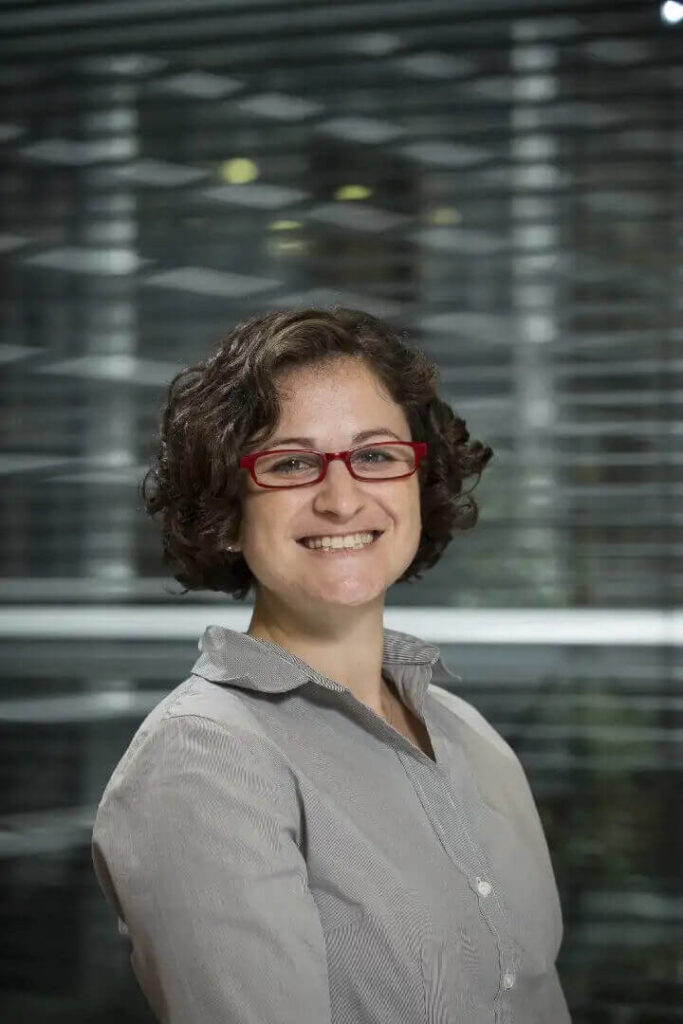Lessons from the GSMA Mobile for Development (M4D) Innovation Fund

Ilana Cohen is the Market Engagement Director for the Mobile for Development (M4D) Utilities programme at the GSMA. She has played a key role in the M4D Utilities Innovation Fund, supported by the UK Government and the Scaling Off-Grid Energy Grand Challenge for Development. The fund was set up to test and scale the use of mobile to improve or increase access to energy, water and sanitation services. 50 organisations have received grants.
I caught up with Ilana in a recent visit to Nairobi. She talked about the evolving role of the mobile in delivering energy, water and sanitation services to the unserved and underserved.
Mobile already plays a key role in providing energy services to rural off-grid populations using the pay- as-you-go (PAYG) model. What are the models that your grantees are working within the water sector?
We are seeing the use of mobile in monitoring and paying for water. Initially, we had organisations using mobile to collect customer feedback on when water is available. We had an NGO in Angola — Development Workshop Angola — try this. We also had a social enterprise in India — Next Drop.
Then other organisations started to incorporate digital payments for water. The payments for water collected at communal kiosks can be made through NFC cards topped-up directly by mobile money or via agents. And for piped connections, households can make pre- or post- payments directly via mobile money.
In Ghana, we have Safe Water Networks using pre-paid cards for communal water kiosks and testing pre-paid smart meters for household connections. Drinkwell, in Bangladesh, has added GSM monitoring to their treatment and distribution water stations and is hoping to soon add pre-paid NFC cards. Uduma is installing pre-paid devices on rural water hand-pumps in Mali. eWaterPay launched a similar model in Gambia and Tanzania on communal water kiosks. In Niger, we have an example of using smart prepaid meters for household connections which can be paid using mobile money.
GSM or the Global System of Mobile Communications is, of course, the standard for mobile communications. It also allows remote monitoring. NFC or Near-field communications allows two devices to talk to each other. It is used in a contactless payment system. It allows people to pay by bringing their smartphone or NFC card (without a smartphone) near the kiosk or the meter.
Are urban water utilities adopting these new technologies?
Let’s talk a little more about what is happening in Niger. The company — City Taps — is installing more than a thousand pre-paid smart meters. It has partnered with Société des Eaux du Niger (SEEN), which is operated by Veolia. The interesting thing is that a number of these households had been disconnected because of unpaid water bills. Residents had given up hope of ever being a utility customer again. Since the installation of these smart meters, customers continue to pay for their arrears, and it is expected that the debt will be paid off in the next few years. Customers are able to reconnect to the utility because they pay a small portion of their arrears along with the current water charges. And since now they have moved to a pre-paid system there are no risks of default.
We also have Wonderkid. The company is developing digital applications for water utilities. It has developed a smartphone meter reading app that can be used by water utility staff for real-time meter reading and billing. They have also developed systems that let customers query their bills if they are worried that their bills are getting out of hand, or raise complaints where needed. Customers can also pay using mobile money. Thanks to these features, the water utilities can increase revenue and customer satisfaction.
What about in sanitation?
In sanitation, most of the organisations that we are supporting are working in urban areas. Container-based sanitation is an option in areas where there is no sewerage system. The human waste is collected in sealed containers. The containers are then removed and transported to treatment facilities. Running these models can be expensive. It is labour-intensive to go door-to-door to collect and replace containers. Mobile technology can make the operations more efficient by optimising the collection and the transportation of waste.
We are supporting the Container Based Sanitation Alliance, a coalition of these organisations. The Alliance is developing a mobile application that can work as a CRM and workflow tool for its members. The tool can be used by field staff to register customers, coordinate the collection agents, track payments and so on.
Let us get back to energy. PAYG solar started in East Africa. How quickly has it spread to other parts of the continent?
When we started our programme in 2013, and companies like MKOPA, Mobisol, Off-Grid Electric (now Zola) were building PAYG businesses in Kenya and Tanzania, we saw a whole ecosystem growing around them. Mobile money was becoming popular not just for person-to-person payments but also for merchant payments. Companies like Kopo Kopo were helping PAYG solar companies integrate with mobile operators. Kenya was the most advanced, but other countries such as Tanzania were catching up.
Much will depend on how mobile money picks up in the rest of the continent. Sub-Saharan Africa has long been the epicentre of mobile money, and account registration continues to grow steadily year-on-year. However, in some parts of the continent, the payments ecosystem is not yet fully established, and in many markets where it exists, it remains dominated by person-to-person payments. PAYG companies also need a well-trained, well-spread out mobile money agent network, and in certain countries, this has yet to be established. In these markets, PAYG companies are having to do it all, from familiarising themselves with how mobile money works to then selling the advantages to customers. They are realising that they have often underestimated the amount of effort this takes.
It is also just not about the existence of mobile money, but about having real-time integration. For seamless operations, you also need companies to get real-time notification of a customer’s payment and to uniquely match it with a customer account. Imagine you are a customer in rural Africa and you have made a payment and want your solar system to be switched on. If these features don’t exist or function, the payment is received by the mobile operator but the PAYG solar company has no way of knowing which account to credit. Too often the customer must call the company and let them know that she has made the payment. This hinders the ability of PAYG solar companies to scale because they have to invest too much in their call centre to manage this process.
Yet getting real-time mobile money integration with a mobile operator can, unfortunately, be a lengthy process. This is why the GSMA built the Instant Payment Notification Hub (IPN Hub), which provides a single point of integration between multiple mobile operators and multiple PAYG providers. This simple platform means that once a PAYG solar company connects to the hub, the effort to connect them to mobile operators on the platform is minimal. This includes connecting to operators in new markets. Since our initial pilot in Rwanda with Zola, Bboxx, MTN and Airtel Tigo, we’ve been expanding the hub to new markets across Africa, and as of June 2018, the hub has processed over one million transactions.
The PAYG solar sector has seen a lot of investor interest. After initial pilots, many of them supported by the GSMA M4D Utilities Innovation Fund, companies have been able to raise large amounts of capital. Yet one continuing issue is that there have been very few companies founded by Africans in this field.
Yes, it is true that among our grantees, we do not have as many local companies as international companies in the PAYG sector in Africa. Foreign companies often have strong advantages for raising international funds because of their common educational background, networks and language skills which allow them to navigate time-consuming, complex, and rigorous application processes. There’s much that needs to be done to address this, and this is why the GSMA’s market engagement staff are based in the region — and the majority are from the region — so that we have a closer connection to the market and local companies.
However, owing to the way the PAYG sector has evolved, there is now a renewed opportunity for local companies. You do not have to build your own customer relationship management system. You can get it from Angaza, BBOXX, Mobisol or Solaris, among others. You don’t have to make your own hardware, either: you can get it from d.light, BBOXX, Greenlight Planet, Omnivoltaic.
This allows companies to specialize in distribution, as is the case with PEG, Oolu Solar and Baobab+ . Businesses built on local market knowledge should be able to excel in marketing and distribution. The good news for all is that this value chain specialisation should allow for more rapid scaling as companies across the value chain perfect their segment.
The GSMA’s IPN Hub is also an important part of supporting local businesses in PAYG solar. Because the GSMA encourages mobile operators connected to the IPN Hub, small companies without the same resources or existing customer base don’t have to do this independently. And we’re really excited that this is paving the way for other PAYG models outside of solar, such as biogas and water.
Some solar companies use SIM cards in their devices to remotely monitor and control the device. What’s new in this space?
The PAYG model allows customers to pay regularly for the solar system. Some companies use GSM monitoring to provide the remote control capability for the unlocking the device on payment. This monitoring can also be used to perform preventative maintenance. Some companies are moving further into the IoT space whereby their solar systems receive information via algorithms pulling from multiple sources. We have a grantee called SolarWorks! which is combining the usage data with weather predictions to improve battery performance and reduce system downtime. Our grantee SunCulture provides PAYG solar irrigation and they use a SIM card in the pump which receives soil data and weather data that inform the need to irrigate.
But it is important to remember that sensors cost money and transmitting data involves charges. Companies must, therefore, make choices.
Many of the examples that you gave are from smaller organisations. How are the larger companies approaching the market?
We’re interested in how mobile can enable access to energy, water and sanitation services, so that also involves large urban utilities and mobile operators. In fact, the larger companies are very important to this space because they already have huge customer bases which help new innovations to scale faster. For example, we have supported the Lilongwe Water Board and currently have a grant with the Kampala Capital City Authority — both government bodies — to adopt mobile-enabled services. And while CityTaps is a start-up, their clients are of course large water utilities. The opportunity to use mobile is not new to these companies, but providing utilities with the funds and the technical support to trial this is very important.
We’ve also written in our Annual Report about the increased appetite that mobile operators have in this space, especially PAYG solar, though of course, they each have a different view on their role in these innovative businesses. MTN is involved in partnerships with several organisations across their markets in Africa. A start-up will come to the local MTN office and say, “your customers do not have electricity to charge their phones and I can get it to them.” The local MTN country officer would get that. With our grantee Fenix, which was recently acquired by the global utility company ENGIE, MTN Uganda’s marketing partnership was very important to their growth. Orange has received two grants from the GSMA; one to develop their own PAYG solar business in Madagascar and another to develop smart-metering for mini-grids in Burkina Faso. They are launching these models across their markets in Western Africa.
One other exciting evolution in the synergy between mobile operators and PAYG solar companies is that we’re starting to see more companies selling smartphones on a pay-as-you-go basis, as an add-on product to solar home systems or cook-stoves. Our grantee Vitalite is trialling this in Zambia, as are other companies elsewhere. If you look at it this way, PAYG is becoming more like a platform.
For the GSMA, working across start-ups, large corporations and government-operated organisations has its challenges, but we believe that these actors all have an important role to play in enabling energy, water and sanitation access.



